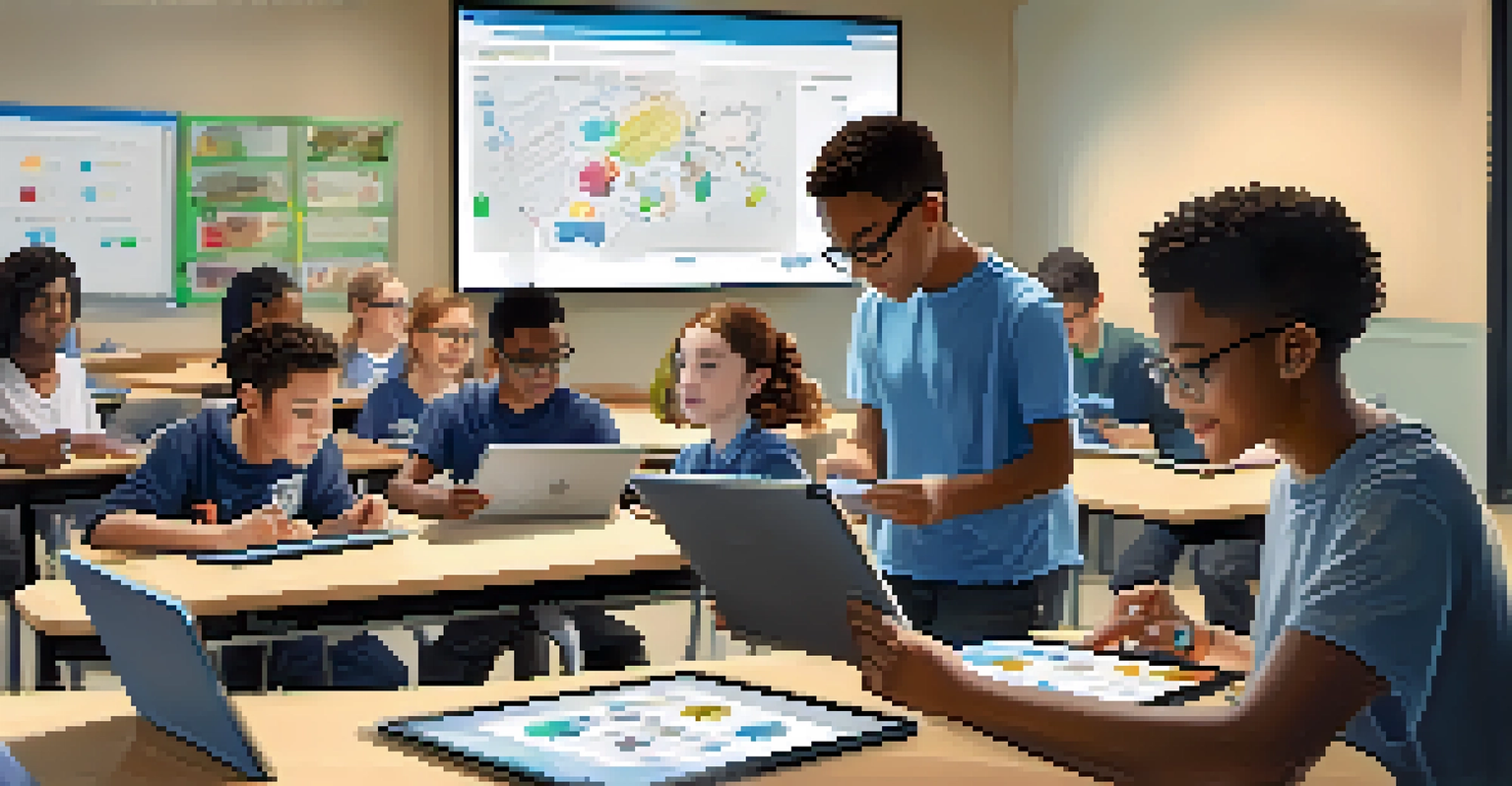The Evolution of Higher Education: Trends and Future Outlook

The Historical Roots of Higher Education
Higher education traces its roots back to ancient civilizations, where institutions like the University of Bologna and Oxford were established. These early universities focused on a broad curriculum, aiming to educate individuals in various fields of knowledge. Over the centuries, the structure and purpose of higher education evolved, responding to societal needs and the demands of the workforce.
Education is the most powerful weapon which you can use to change the world.
In the Middle Ages, higher education became more formalized, emphasizing theology and philosophy, reflecting the values of the time. Fast forward to the Renaissance, and we see a shift towards humanism, leading to the inclusion of subjects like literature and the sciences. This transformation laid the groundwork for the diverse educational landscape we see today.
As societies progressed, the concept of higher education expanded, accommodating new disciplines and pedagogical methods. This evolution not only highlights the adaptability of educational institutions but also underscores their critical role in shaping informed citizens capable of driving societal change.
The Shift Towards Online Learning
The rise of the internet in the late 20th century marked a significant turning point for higher education, introducing online learning as a viable option. Initially met with skepticism, online courses have rapidly gained credibility, offering flexibility and accessibility to a wider range of students. Today, platforms like Coursera and edX provide courses from top universities, democratizing education in unprecedented ways.

This shift has been particularly beneficial for non-traditional students, such as working professionals and those with family commitments. They can now pursue degrees or certifications without the constraints of a physical campus. Moreover, online learning often incorporates innovative technology, making education more engaging and interactive.
Evolution of Online Learning
The rise of the internet has transformed higher education, making online learning a flexible and accessible option for diverse students.
However, this transition also raises questions about the quality of online education compared to traditional classroom experiences. Institutions are now focusing on developing robust online programs that maintain academic rigor while catering to diverse learning styles, ensuring that students receive a comprehensive education.
The Rise of Microcredentials and Short Courses
As the job market evolves, so too does the demand for specific skills, leading to the rise of microcredentials and short courses. These bite-sized educational offerings allow individuals to gain targeted knowledge without committing to a full degree program. They cater to lifelong learners who wish to enhance their skills quickly and effectively.
The future belongs to those who believe in the beauty of their dreams.
Employers increasingly recognize the value of these credentials, often prioritizing practical skills over traditional degrees. For example, a tech company may value a candidate's proficiency in coding more than their formal education background. This shift emphasizes the need for higher education institutions to adapt their offerings to meet industry demands.
Microcredentials also promote a culture of continuous learning, encouraging individuals to stay updated in their fields. As industries change rapidly, having the ability to pivot and acquire new skills becomes essential, making these short courses a valuable asset in today's job market.
The Importance of Diversity and Inclusion in Education
Diversity and inclusion have become central pillars in the evolution of higher education. Institutions are recognizing the importance of creating an environment where all students feel valued and supported, regardless of their background. This commitment to inclusivity not only enhances the educational experience but also prepares students to thrive in a diverse workforce.
Efforts to promote diversity include scholarships for underrepresented groups, recruitment initiatives, and inclusive curricula that reflect a variety of perspectives. By fostering a diverse learning environment, institutions can enrich discussions and encourage innovation through the blending of different ideas.
Microcredentials for Skill Development
As job markets evolve, microcredentials and short courses are gaining traction, allowing individuals to quickly acquire targeted skills that employers value.
Moreover, a diverse student body contributes to personal growth and understanding, allowing students to interact with peers from various cultural backgrounds. This exposure is invaluable in developing empathy and global awareness, essential traits in an increasingly interconnected world.
Technological Advancements Shaping Higher Education
Technology plays a crucial role in shaping the future of higher education, influencing everything from teaching methods to student engagement. Innovations like artificial intelligence and virtual reality are being integrated into classrooms, creating immersive learning experiences that were once unimaginable. These advancements help cater to different learning styles and enhance student interaction.
For instance, AI-driven platforms can provide personalized learning experiences, adapting to the needs of individual students. This customization allows for a more effective educational journey, where students can progress at their own pace. Virtual reality, on the other hand, offers hands-on experiences in fields like medicine or engineering, enhancing practical skills without the risks associated with traditional training.
While technology brings numerous benefits, it also poses challenges, such as the digital divide. Ensuring that all students have access to these tools is vital for creating an equitable educational landscape. As we move forward, institutions must balance the integration of technology with the need for accessibility.
The Role of Higher Education in Workforce Development
Higher education institutions play a pivotal role in preparing students for the workforce, bridging the gap between education and employment. By aligning curricula with industry needs, colleges and universities can equip graduates with the skills required in today’s job market. This collaboration often involves partnerships with businesses to ensure that programs remain relevant and effective.
Internships, co-op programs, and hands-on projects are becoming standard components of higher education, providing students with real-world experience. These opportunities allow students to apply theoretical knowledge in practical settings, making them more attractive to potential employers. Furthermore, they help students build professional networks that can be invaluable in their job search.
Diversity Enhances Education
Promoting diversity and inclusion within higher education enriches the learning experience and prepares students for a global workforce.
In this rapidly changing economy, the ability to adapt and learn new skills is essential. Institutions are increasingly focusing on developing soft skills, such as communication and teamwork, alongside technical knowledge. This holistic approach to education ensures that graduates are not only job-ready but also capable of thriving in their careers.
Future Outlook: Evolving Challenges and Opportunities
As we look to the future, higher education faces a myriad of challenges and opportunities. Rising tuition costs, student debt, and concerns about the value of a degree are pressing issues that institutions must address. However, these challenges also present an opportunity for innovation and reimagining the educational landscape.
Institutions are exploring alternative funding models, such as income-share agreements, which allow students to pay for their education based on future earnings. This approach can alleviate financial burdens while ensuring that students receive quality education. Additionally, the rise of competency-based education offers another pathway, allowing students to progress based on their mastery of subjects rather than time spent in class.

Moreover, as the global landscape continues to shift, institutions must prioritize global learning experiences and foster intercultural competencies. Preparing students to navigate a complex world will be essential for their future success, making adaptability and innovation key themes in the evolution of higher education.